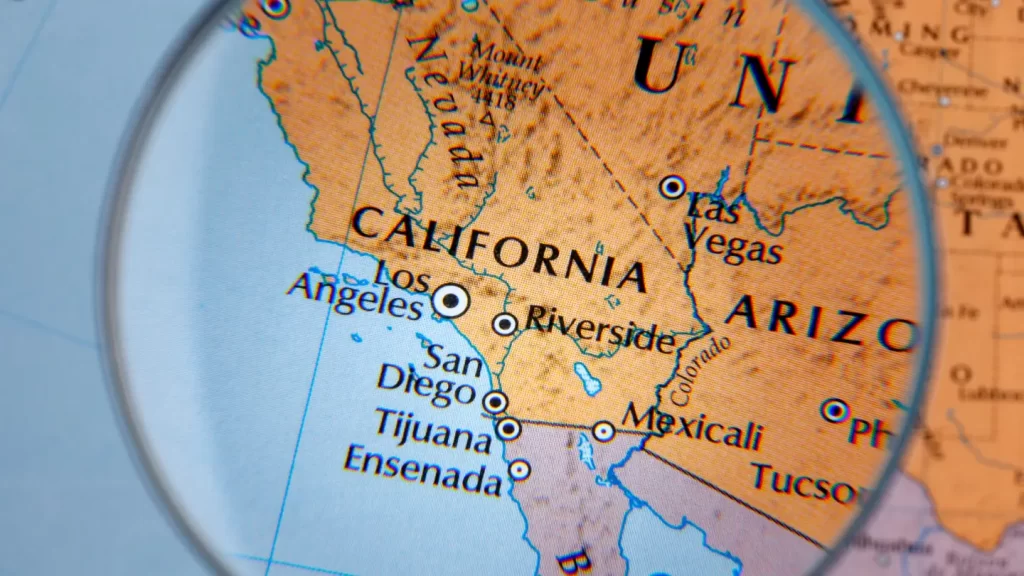We use affiliate links to run our site. When you buy through links on our site, we may earn an affiliate commission, without any added cost to you. Learn more
California, often referred to as the “Golden State,” is renowned for its beautiful landscapes, diverse culture, and thriving economy. But there is one aspect of California that instills fear and uncertainty among its residents and visitors alike – earthquakes.
The state’s unique geological setting makes it prone to seismic activity, resulting in a long history of devastating earthquakes.
In this article, we will delve into the geology behind California’s earthquake epidemic, exploring the factors that contribute to its occurrence and the impact it has on the state.
9 Things About Earthquakes You Need to Know
How Often Does California Have Earthquakes
Earthquakes in California occur with a frequency that can be alarming. On average, the state experiences thousands of earthquakes each year, although most are too small to be felt by humans.
California is also prone to larger and more destructive earthquakes. The Richter scale, commonly used to measure earthquake magnitude, has witnessed numerous high-intensity earthquakes in California’s history.
Notable events include the 1906 San Francisco earthquake, which had an estimated magnitude of 7.8, and the 1994 Northridge earthquake, which measured 6.7 on the Richter scale.
Understanding the Geology of California

To comprehend the prevalence of earthquakes in California, we must first grasp the state’s geology. The region lies on the Pacific Plate, one of several large tectonic plates that make up the Earth’s crust.
California is situated on the western edge of this plate, where it is bordered by the North American Plate. The boundary between these two plates is marked by the San Andreas Fault, a prominent fault line that stretches approximately 800 miles across the state.
Plate Tectonics and Earthquakes
Plate tectonics, the scientific theory that explains the movement of Earth’s lithospheric plates, plays a crucial role in California’s seismic activity.
As the Pacific Plate and the North American Plate interact, they constantly move and grind against each other, generating enormous amounts of stress.
This stress builds up over time until it is released in the form of an earthquake. The movement along the fault lines, such as the San Andreas Fault, can result in significant seismic events.
Fault Lines: The Culprits Behind the Quakes
Fault lines are fractures in the Earth’s crust where rocks on either side have moved. These are the hotspots for earthquakes. California is home to numerous fault lines, but let’s discuss the most notorious ones:

- San Andreas Fault: This is the big one! Stretching over 800 miles, it’s the state’s most famous fault line. It traverses the state from the Salton Sea in the south to Cape Mendocino in the north.
- Hayward Fault: Running through densely populated areas like Oakland and Berkeley, this fault is considered one of the most dangerous in the United States.
- Calaveras Fault: Located in the East Bay region, this fault has been responsible for some notable quakes in the past.
| Fault Line | Notable Earthquake | Year |
|---|---|---|
| San Andreas | San Francisco | 1906 |
| Hayward | Oakland | 1868 |
| Calaveras | Morgan Hill | 1984 |
Fact: The 1906 San Francisco earthquake, which devastated the city, was caused by a rupture in the San Andreas fault.
A Glimpse into the Past: Historical Earthquakes
California’s history is punctuated with significant seismic events. The 1906 San Francisco earthquake is perhaps the most infamous, causing widespread destruction and fires that raged for days. Then there was the 1994 Northridge quake, which resulted in 57 deaths and billions in damages.
These historical events serve as stark reminders of the power of nature and the importance of being prepared.
The Impact of Earthquakes on California’s Infrastructure
The impact of earthquakes on California extends beyond the immediate shaking and destruction. The state’s infrastructure is highly vulnerable to seismic activity, with buildings, bridges, and highways at risk of significant damage.
The 1989 Loma Prieta earthquake, for instance, caused the partial collapse of the Cypress Street Viaduct in Oakland, resulting in the loss of 42 lives.
Furthermore, the destruction of critical infrastructure can have long-lasting economic consequences, disrupting transportation, communication, and power supply systems.

Tips for Earthquake Safety:
- Drop, Cover, and Hold On: In the event of a quake, drop to the ground, take cover under a sturdy table or desk, and hold on until the shaking stops.
- Prepare an Emergency Kit: This should include water, non-perishable food, a flashlight, batteries, a first-aid kit, and essential medications.
- Stay Away from Windows: Glass can shatter during a quake, posing a significant risk.
- Secure Heavy Items: Ensure bookshelves, TVs, and other heavy items are anchored to walls to prevent them from toppling.
Predicting and Monitoring Earthquakes in California
While it is impossible to predict earthquakes with certainty, scientists and researchers have made significant strides in monitoring seismic activity in California.
The California Integrated Seismic Network (CISN) utilizes an array of seismometers to detect and record ground motion. This data is then used to analyze earthquake patterns and improve our understanding of the behavior of seismic events.
Also, early warning systems, such as the ShakeAlert system, provide valuable seconds to minutes of advance notice, allowing individuals to seek safety before the shaking begins.
Living in California comes with its set of challenges, but the state has made significant strides in earthquake preparedness. Buildings are now designed to be more earthquake-resistant, and there are regular drills in schools and offices.
The Future of Earthquake Research and Preparedness in California
As technology and scientific knowledge advance, the future of earthquake research and preparedness in California looks promising.
Scientists are continuously improving earthquake modeling techniques to gain valuable insights into potential scenarios and their consequences.
Additionally, ongoing efforts are underway to enhance public education and awareness about earthquakes, ensuring that Californians are well-informed and prepared for seismic events.
By investing in research and preparedness measures, California can mitigate the impact of earthquakes and protect its residents.
Conclusion
California’s earthquake epidemic is a testament to the dynamic forces at work beneath its surface. The state’s unique geology and its position on the tectonic plate boundary make it susceptible to frequent and sometimes devastating seismic events.
Understanding the geology behind these tremors is crucial for comprehending their occurrence and taking appropriate precautionary measures.
By embracing earthquake preparedness, monitoring advancements in earthquake research, and investing in infrastructure resilience, California can mitigate the impact of future earthquakes and ensure the safety and well-being of its residents.
Stay informed and prepared! Visit California Emergency Services for valuable resources and information on earthquake safety and preparedness.
Amazon and the Amazon logo are trademarks of Amazon.com, Inc, or its affiliates.
